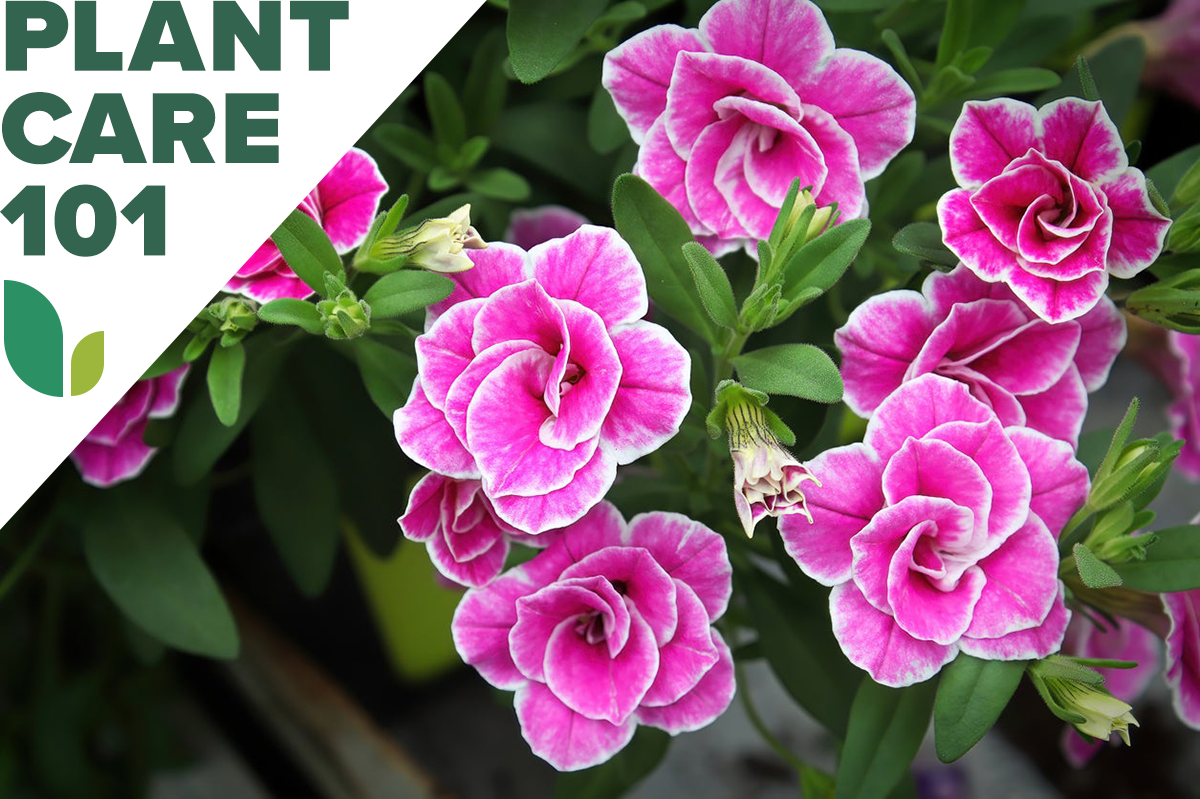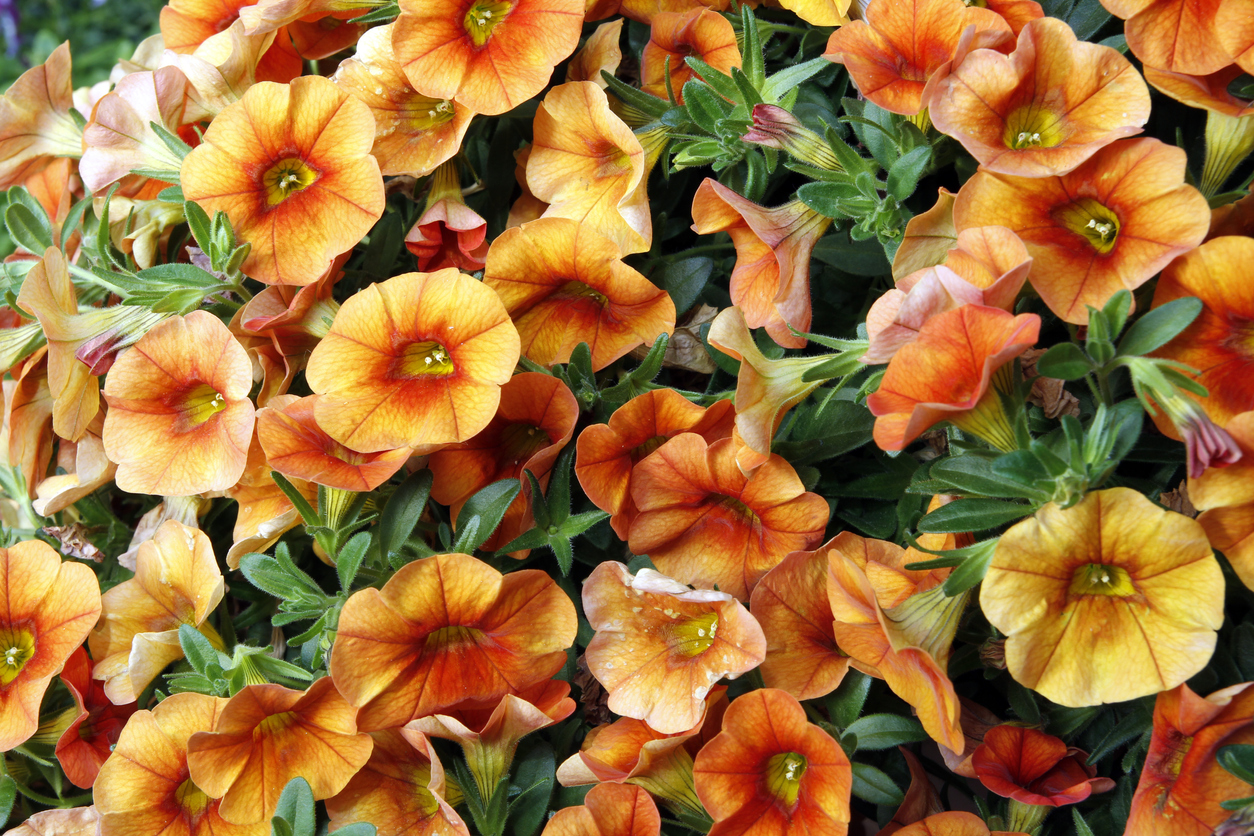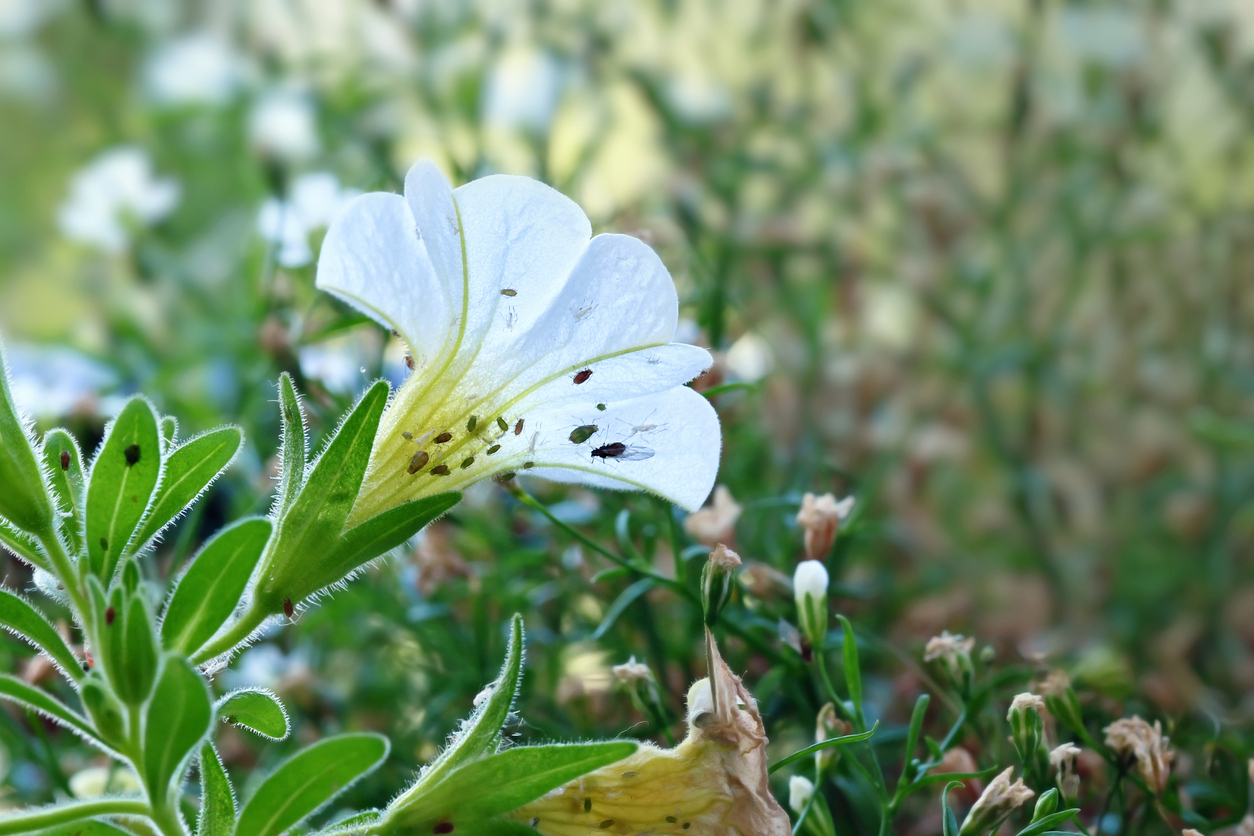

We may earn revenue from the products available on this page and participate in affiliate programs. Learn More ›
There’s no such thing as the perfect plant, but calibrachoa (aka million bells) might be one of the closest things to it. A hardy, showy, and delightfully low-maintenance plant, calibrachoa are celebrated for the rainbow of colors they bring to summer gardens. As with its cousin, the petunia, calibrachoa care is easy enough that almost anyone can grow this showstopper in the garden with incredible results. All it takes is the right conditions and a few of the below growing tips to learn how to care for calibrachoa.
Growing Calibrachoa at a Glance
Common Name: Calibrachoa, million bells
Scientific Name: Calibrachoa (group)
Hardiness Zone: USDA Zones 9 through 11
Soil: Quick draining, pH 5 to 6.5
Light: Full sun
Water: Moderate
Food: Regular water-soluble 10-10-10
Propagation: Cuttings, seeds
Safety: Nontoxic
Calibrachoa Characteristics
Like petunias, the calibrachoa is native to South America and Latin America. Today’s calibrachoa come in almost every color imaginable, from bright red and sunset orange to blush pink and even striped. Their many small, funnel-shaped flowers look like miniature petunias, with some gardeners even referring to them as such.
Both calibrachoa and petunias are members of the Solanacea plant family, and they were once even classified as belonging to the same genus. Today, most horticulturalists recognize the Calibrachoa group as its own genus. While it’s often referred to as million bells, the names Million Bells and Super Bells are technically trademarked in the nursery industry.
Calibrachoa are prolific bloomers from late spring into autumn, and they tolerate a variety of conditions. Calibrachoa like sun and heat, but they can handle some shade and cooler temperatures. Their trailing habit really shines in hanging baskets and for spilling over containers’ edges. They grow quickly, aren’t prone to many insects or diseases, and don’t even require much deadheading. In a nutshell: Calibrachoa are the gardener’s dream plant.
Despite being an herbaceous perennial, calibrachoa can’t handle cold snaps, so they’re most often planted as annuals outside of USDA hardiness zones 9 through 11. Calibrachoa are a favorite of hummingbirds and butterflies, and this pollinator-friendly choice can serve as the centerpiece for any garden or patio setting.
Recommended Calibrachoa Varieties

- Crave: This variety’s star-like deep-orange centers give way to lighter orange edging. Tolerant of partial sun as well as full sun, it grows 10 to 14 inches tall and 12 to 16 inches wide.
- Superbells Cherry Red: Its bright, pink-red flowers can tolerate partial sun, and the plant spreads to at least 12 inches with a height of 6 to 12 inches.
- Superbells Lemon Slice: With lemony yellow flowers striped with white, this variety is prolific in full to partial sun. It grows between 6 and 12 inches tall with a spread ranging between 1 and 2 feet.
- Cabaret Purple Glow: Magenta-colored flowers with yellow throats tumble from urns and garden baskets in sun to partial shade. It grows up to 10 inches tall with a spread of 18 inches.
- Superbells Tangerine Punch: This variety has a prolific spread of stunning tangerine flowers with deep-orange centers, and it grows 6 to 12 inches tall and 1 to 2 feet wide.
- Superbells Holy Moly!: Showing a creamy yellow flower with magenta-speckled stripes, this unique calibrachoa trails to 24 inches with a height of about 6 inches.
Planting Calibrachoas
Home garden care of calibrachoa is easy if the plants have enough space to spread out. They have a trailing habit, typically reaching out between 12 to 24 inches, which makes them a great choice for pots, urn-shaped containers, and hanging baskets.
When is the best time to plant calibrachoas?
Calibrachoa bloom time ranges from spring to fall, but knowing the exact time of year to plant calibrachoa mainly depends on your climate. Generally speaking, calibrachoa prefer warmth, so plant them after the danger of any frost has passed.
Because they tolerate heat, the peak season for many growing areas is mid-to-late summer. Calibrachoa grows nearly all year in mild climates but starts to make an appearance in garden centers beginning in April or May.
Where can calibrachoa grow?
Growing calibrachoa in pots is one of the best ways to ensure they stay healthy. Calibrachoa dislike soggy soil, so plant them in raised beds and containers, like hanging baskets, in quick-draining soil. They also perform best in slightly acidic soil (pH 5 to 6.5).
Calibrachoa need full sun, at least 8 hours a day, and are generally drought-tolerant and quite heat-tolerant. The plants can grow leggy and produce fewer flowers if planted in the shade. There are many calibrachoa hybrids today that tolerate partial sun, however.
How do you plant calibrachoa?

Most calibrachoa plants are sold in 4-inch nursery pots, 6-inch pots, or 1-gallon sizes. They are also available already planted in hanging baskets, requiring no transplanting. Follow these steps for successful planting when caring for calibrachoa:
- Water the plant and allow it to drain completely.
- Gently remove it from its containers. If it has become rootbound and grown around the container drainage holes, use clean, sharp scissors or a garden tool (like a Hori-Hori knife) to help free the roots from the container.
- Lightly massage the plant root ball, especially in rootbound cases.
- Place the plant in well-draining garden soil or into a container. Using a high-quality potting soil suitable for outdoor planters, fill the chosen container high enough to meet the bottom of the plant’s roots, creating a small hole for the calibrachoa to nest.
- Fill around the plant with more potting soil and gently press the dirt down.
- Water the plant and allow it to drain thoroughly.
- After watering, add additional soil as needed.
- Gently mist or spray the plant to remove dirt from the flowers or leaves.
Can you grow calibrachoas in containers?
Yes, calibrachoas thrive in containers. Calibrachoa care in hanging baskets is just as easy as in any other container, especially since hanging baskets rarely have problems with soggy soil. As a bonus, million bells are fast growers and prolific bloomers, so they fill out container gardens nicely with color that lasts from early summer into fall.
Watering Calibrachoas
Calibrachoas need consistent watering, but they don’t like soggy soil. Be sure that soil is dry to the touch before watering and that containers have adequate drainage to prevent the roots from rotting. Use a quick-draining potting soil, but skip any additives that help retain moisture. Water more if the container is small, as the plant grows, and times when temperatures are high.
Fertilizing Calibrachoas
Calibrachoas do best in containers, requiring more frequent watering than plants that grow in garden beds. Because of the amount of watering, nutrients leach out of the soil, so feeding calibrachoas throughout the growing season is a necessity. Use a water-soluble, balanced acidic plant fertilizer (like a 10-10-10 fertilizer) once a week to once a month.
Pruning Calibrachoas
Although calibrachoa bloom time lasts so long and the blooms are so prolific, the genus has surprisingly long-lasting and low-maintenance flowers. Calibrachoa are considered “self-cleaning” plants, which means they do not require deadheading to produce additional flowers. Gardeners can pinch off expired flowers occasionally, otherwise the plant will drop them naturally. If the calibrachoa has gotten leggy, with few blooms, trim back and place in an area with more sunlight.
Propagating Calibrachoas
Million bells do not produce many seeds, so the most common method of propagating calibrachoas is via cuttings. Take calibrachoa cuttings by following these steps:
- Look for a stem about 6 inches long with few or no flowers. Pinch off any flowers from the stem.
- Remove leaves from the lower half of the cut stem.
- Put the stem in water until roots grow, usually within 3 to 4 weeks.
- Transfer it to a sterile potting medium, but be sure the pots aren’t too large to avoid soggy soil.
Safety Considerations
Calibrachoa are nontoxic to humans, pets, and insects. In fact, they attract a variety of pollinators and can help establish a pollinator-friendly garden, even on a patio or balcony.
Potential Pests and Diseases

Calibrachoa tend to be very disease-resistant and hardy but, like any plant, they can attract potential problems if stressed. Aphids are their most common predator, usually attacking a plant that’s either overfertilized, underwatered, or not getting enough sunlight. Root rot is common in calibrachoa, which is why it’s important to ensure their pots have adequate drainage.
FAQs About Calibrachoa Plant Care
Although calibrachoa care is fairly easy, there are still common questions that come up when deciding whether this plant is right for your garden habitat.
Q. Do calibrachoa like the sun?
Yes, calibrachoas prefer full sun, although there are varieties that are more tolerant of partial sun, especially in areas with hot summers. Generally speaking, they need 6 to 8 hours of sunlight a day.
Q. Can calibrachoa be perennial?
Yes, in mild climates (USDA Zones 9 to 11) where the danger of a winter freeze is low to almost nonexistent, calibrachoa are considered perennial.
Q. How fast do million bells grow?
Million bells, or calibrachoa, are fast growers. By maturity, most calibrachoa spread to between 12 and 24 inches and about 6 to 12 inches tall. Much of this growth occurs in spring and early summer.
Q. What’s the difference between million bells and petunias?
Million bells is the common name for calibrachoa. Calibrachoa and petunias are close relatives, and once were considered members of the same plant genus. Now, they are widely considered to be separate genera. They are both members of the Solanaceae family, the same plant family as potatoes and tomatoes. Confusing things further, another common name for calibrachoa is mini petunias.
Q. Are calibrachoa indoor plants?
Calibrachoa are grown to be outdoor plants and are often treated as annuals and replanted each year. However, they can be brought inside either to overwinter or to be grown as a houseplant. Calibrachoa are susceptible to aphids and growing them indoors won’t prevent this: in fact, without enough direct sunlight and regular water they can become stressed and attract pests indoors.
Looking for more low-maintenance flowering plants? Check out our guides on growing geraniums, lantana, and marigolds.
